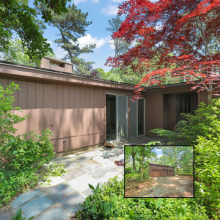Why Marion qualifying as a green community may not be such a good idea
To the Editor:
The Energy Management Committee (EMC) is asking the October Town Meeting (TM) voters to adopt a stretch building code and authorize $55,000 to buy out the two BMW and Nissan electric car leases.
A YES vote for the proposed stretch building code means ratification for the Town to become a Green Community. A NO vote means the Town does not becomes a Green Community. The current state building code would remain and proposed $55,000 electric car lease buy out option will no longer be necessary.
The stretch building code will have impact on taxpayer’s home owner’s replacement value insurance coverage. Dig out your home owner’s insurance policy and have it reviewed to see if you have adequate replacement coverage. Depending on the policy terms and conditions and to avoid coverage gaps homeowners may need a green gap coverage endorsement and pay any increase in primium required for the stretch code replacement cost coverage.
Community construction needs vary. Not all construction needs to be, or should it be required to meet stretch code requirements.
Stretch building code Power Point slides presented by Seth Pickering, the state’s Green Energy coordinator, at the last EMC meeting show there is not much grant money available. The state has budgeted up to $20 million for statewide GC grants which means the state-wide average grant for the 241 designated communities is $83,000.
If Marion qualifies, its initial $ 140,000 grant (the qualifying sign up bonus, an amount determined by a demographic formula) would be use for qualifying energy related projects. Thereafter, Marion would compete with all the 241 qualifying communities in the grant beauty contest for additional grant money. There are winners and losers as grants will range from nothing to the $250.000 max cap. After the $140,000 bonus grant, there are no assurances that Marion will receive any additional grant money. This notwithstanding Marion’s spending and investing requirements necessary for meeting the GC grant criteria for continuing the community competition for limited state funding available for additional grants. This would include an estimated $280,000 in capital spending for upgrading to more fuel-efficient vehicles targeted by the EMC in 2015 at the time the electric cars were leased using state grants.
Grant money is used for municipal energy related projects. Marion, a small community, will not have many qualifying grant projects. Grant potential therefore will be limited.
The Town cannot be in a position of spending and investing more money for GC compliance criteria then it receives in grant money. The EMC needs to provide an estimated breakeven point for its GC project. Taxpayers have a right to know this impact before being asked to vote on the issue. The finance and capital committees have not vetted any of this and the ten-year capital forecast has no EMC projects including proposed electric car purchases. The vetting and prioritizing of EMC projects should be no different than other municipal projects.
Ted North, Marion









